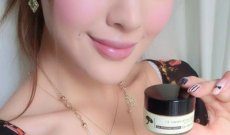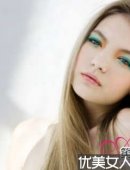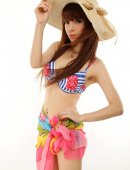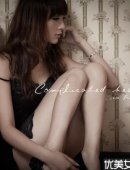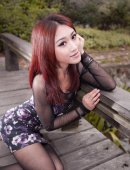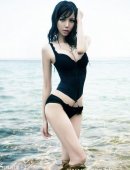-
Fashion, Opera – And Now Museums: Christian Lacroix’s Thir
- 发表时间:2018-08-28 11:40 | 巴黎女士女性时尚网 | 点击数: 次
-
snis 268
tiantianse
雨后的故事3动态图
黑泽爱
美女被戳屁屁
郑靓歆女装
电梯吞人
君臣实业 远洋君
动漫mm邪恶动态图
佐藤琉璃
河马球讯
-

‘The Rose Empire’ exhibition at Louvre Lens in 2018
If that sounds crazy, it has a turn-out-your-attic fascination. These objects, displayed in the Papal Chapel, with its soaring ceiling and priestly windows, all seem to be entirely separate items in which the curator, and especially Lacroix, have found links.
‘Karl saw that my fashion was very, very theatrical and told me, “This isn’t really fashion – the patterns and the colours are all for the theatre,” then sending me off with lots of introductory letters,’ said Lacroix.
本文相关品牌
转载声明
Palais des Papes
And far from seeing his job as imposing order onto this cabinet of curiosities, Lacroix cherished the opportunity to make a historical ‘mix-and-match’.
敬请期待中文版
‘Since the dawn of time, we have been looking for and collecting the most remarkable objects – the most astonishing, the strangest, jealously preserved or generously given,’ the designer continued. ‘My aesthetic tastes drew me towards the unclassifable, the strange, the baroque and the extravagant – just as much as I was drawn to the removable and the extraordinary.’
And the glasses? Dug from a field around 1810, the Gallic-Roman object was probably made for a soldier as a primitive lucky charm.
‘Mirabilis’ read the colourful exhibition posters all over this once Papal city, where the towering stone buildings draw wonder and awe.
将本文分享到

‘The Rose Empire’ exhibition at Louvre Lens in 2018
Palais des Papes
The exhibition looks like a mad, and sometimes magical, mix of objects which were mostly chosen originally as informative: bones of a dinosaur; winged butterflies; the mummies from ancient Egyptian sarcophagi – and so much more.
‘As for ‘Mirabilis’ – I am happy to invite people to rediscover the richness of our museum collections unveiled in this cabinet of curiosity – really miraculous!’ she said.

So maybe this surprising and fascinating display in Avignon is not so very far from Lacroix’s previous life in fashion. And perhaps he likes it that way.
Whether it was the eyes of Lacroix or the curatorship of the five museums which brought these apparently disparate works together, it struck me that this kind of pick-and-mix approach expresses much of that is happening in fashion today: the deliberately offbeat colours, details taken from other eras and mixing 1980s shoulders with new-millennium materials.
Palais des Papes

A selection from 'the cabinet of curiosities' assembled in Christian Lacroix's 'Mirabilis' exhibition at Palais des Papes, Avignon
Courtesy of Palais des Papes
Gregory Guittard
‘The Rose Empire’ exhibition at Louvre Lens in 2018
内容来源:VOGUE时尚网 图片来源:VOGUE国际网站:英国Courtesy of Louvre Lens
Palais des Papes

文章导读
Karl was the genius,’ said Christian Lacroix, three decades after he had graduated from the Ecole du Louvre to begin his career.
本文相关单品

Courtesy of Louvre Lens
Add animal bones, carved horses, stuffed birds, paintings of religious figures – all divided into displays of different character by the five museums: Calvet, Lapidaire, Petit Palais, Requien and Roure.
By contrast, the central image for the show looks jokey: a sculpture in stone of the head of a man wearing a pair of black glasses. This figure is surrounded by a crazy mix of a wing-spread butterfly collection, Turkish Iznik pottery; a 19th-century tricycle shaped as a horse; a painted bowl of fruit and images of praying nuns.
It might have been the content of an ancient attic jumbled together. And so it was! Except that the attics were plural: five city museums of Avignon, which have recently been banded together.
Fashion, Opera – And Now Museums: Christian Lacroix’s Third Life
Christian Lacroix (right) with the curator of the 'Mirabilis' exhibition, Pascale Picard (left), and Avignon mayor Cécile Helle (centre)
A painting from the Calvert museum which is part of Christian Lacroix's 'Mirabilis' exhibition in Avignon
A relic from the Calvert museum: a piece of the vertebra of Pope Innocent VI, part of the the 'Mirabilis' exhibition in Avignon
‘Curiosity, far from being unwise, is actually one of the rarest of qualities,’ he claims. ‘It means the desire to learn and to know, to take a closer look at the most unusual, the rarest, and the most precious things that the world, nature and life have been capable of producing.
Tags: snis 268 tiantianse 雨后的故事3动态图 黑泽爱 美女被戳屁屁 郑靓歆女装 电梯吞人 君臣实业 远洋君 动漫mm邪恶动态图 佐藤琉璃 河马球讯
- 爱美
- 健康
- 情感
- 美体

